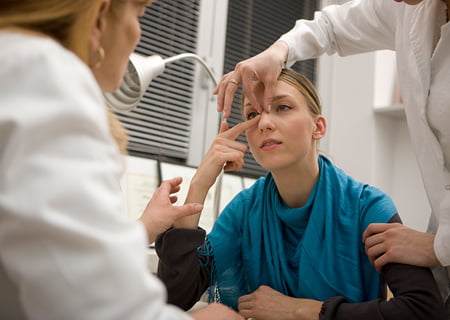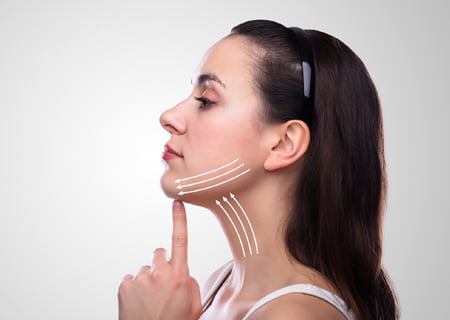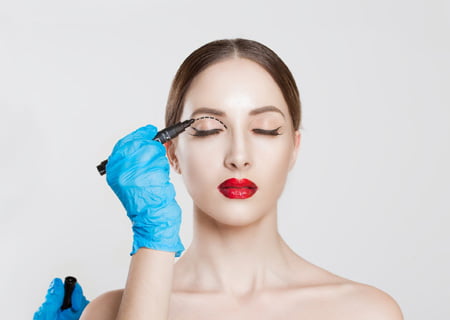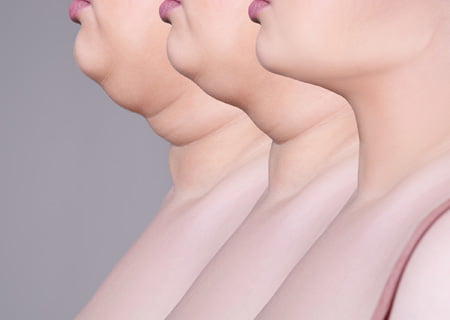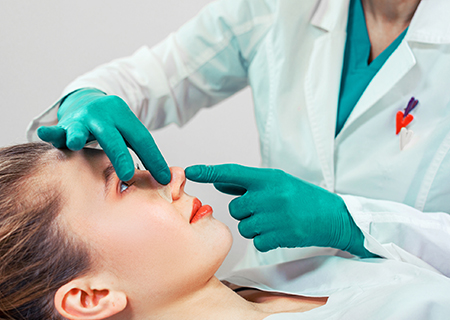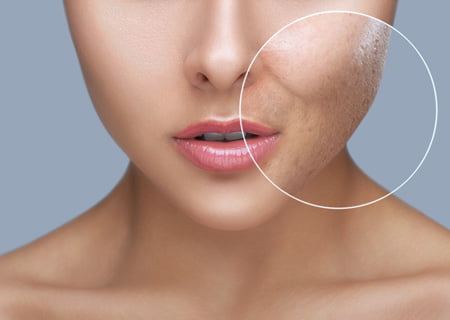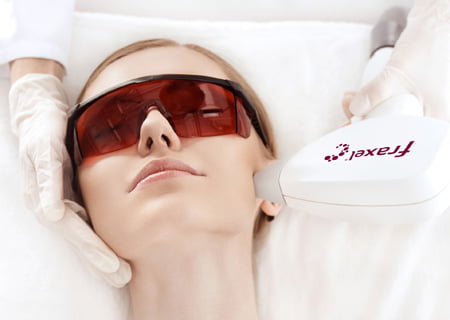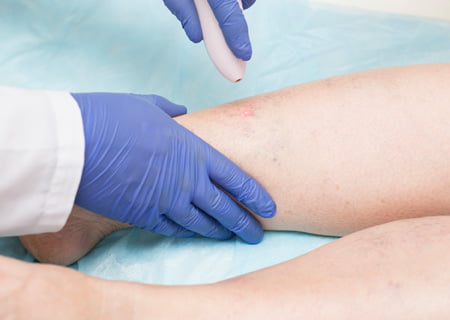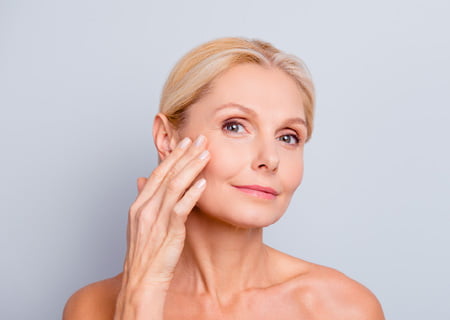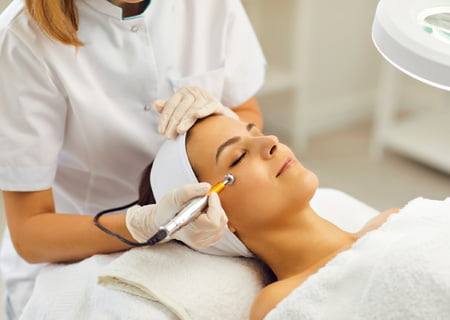Facial Scars: Keloid and Hypertrophic – Causes, Differences, and Treatment Approaches

Though not all scars act the same way, scarring is a normal result of wound healing. Abnormal scars like keloids and hypertrophic scars can turn persistent clinical and emotional issues for patients on the face — where visibility, skin tension, and aesthetics are intimately linked.
Although both scar kinds include extra collagen formation, they vary in behavior, treatment response, and long-term prognosis. Especially in facial areas where function and look are hard to separate, correct diagnosis and a focused treatment strategy are vital.
Dr. Kristina Zakhary of Facial Cosmetic Surgery looks at scar management from the perspective of both cosmetic result and reconstructive accuracy. Having considerable knowledge, skills and expertise in facial plastic and reconstructive surgery, she provides patients with thorough assessment, medical-surgical planning, and individualized treatment for these difficult scar kinds.
People also search
The defining features of keloid and hypertrophic scars are described in this paper together with their causes and evidence-based management strategies for clinical facial practice.
Understanding the Biology Behind Facial Scarring
Every scar starts as a wound. The body starts a healing process once the dermis is damaged — by trauma, acne, surgery, or burns. Collagen fibres in normal healing reconstruct the skin matrix and progressively taper off as the tissue strengthens.
In keloid and hypertrophic scarring, collagen synthesis continues past its appropriate time. Rather, it runs unchecked and causes a raised, thick, and sometimes discolored scar.
Although the underlying cause — a disturbance to the dermal layer — may be the same, the results vary depending on a mix of genetics, skin type, wound tension, location, and immune response.
Key Differences: Keloid vs. Hypertrophic Scars
1. Growth Pattern and Boundaries
- Hypertrophic scars remain confined to the boundaries of the original wound. They may thicken, redden, or become raised, but they do not expand beyond the injury.
- Keloid scars, by contrast, extend beyond the original wound, invading surrounding healthy skin. Their growth is not self-limiting and often continues for months or years unless actively treated.
2. Timeline and Progression
- Usually forming within 4–8 weeks following injury, hypertrophic scars may especially with early intervention progressively flatten over 12–24 months.
- Often appearing three to six months after healing, keloids grow continuously over time. They seldom improve by themselves.
3. Location Sensitivity
Though they can happen anywhere on the body, both kinds are more likely to form on the face in high-tension areas: jawline, chin, cheeks, temples, and earlobes.
Often following piercings, lacerations, or surgeries like facelifts or mole removals, keloids are especially prevalent on the mandibular border and earlobes.
4. Ethnic and Genetic Predisposition
- Individuals with Fitzpatrick skin types IV–VI (Asian and darker skin tones) are significantly more prone to keloid formation. There is also a familial tendency.
- Hypertrophic scarring can occur in any skin type, but it’s often linked more to mechanical tension on the wound as well as genetic disposition.
Clinical Assessment at Facial Cosmetic Surgery
During an initial consultation, Dr. Kristina Zakhary conducts a comprehensive evaluation to determine the scar type, maturity, and response to prior treatments.
Assessment includes:
- Visual and tactile examination of scar texture, thickness, and boundary behaviour
- Detailed history of how the scar developed (e.g., surgery, acne, trauma)
- Review of any prior treatments, including steroid injections, laser therapy, or excision
- Patient goals regarding function, aesthetics, and tolerance for recurrence risk
Precise classification is vital, as misidentifying a keloid as a hypertrophic scar — or vice versa — can lead to treatment failure or worsening.
Why Do Some Facial Scars Become Abnormal?
Facial scars are uniquely prone to hypertrophic and keloid change for three reasons:
- Constant movement – facial expressions exert dynamic pressure on healing tissue
- Thin dermis – the skin’s architecture varies across facial zones, affecting healing
- Visibility and tension – incisions that cross relaxed skin tension lines (RSTLs) heal under greater force, increasing the chance of raised scars
Additionally, facial acne scars — especially cystic lesions on the cheeks or jaw line — can evolve into hypertrophic scars or keloid nodules even without obvious trauma.
Treatment Philosophy: Dr. Kristina Zakhary’s Approach
Managing facial keloids and hypertrophic scars requires a multi-modal strategy. No single method guarantees success, particularly with keloid scars, which carry a recurrence rate of up to 70–90% without adjunctive treatment.
Dr. Zakhary’s treatment plans are customized based on scar type, skin type, and patient priorities. Her philosophy prioritizes function preservation, long-term recurrence prevention, and aesthetic refinement in equal measure.
Non-Surgical Treatment Modalities
1. Intralesional Steroid Injections
Corticosteroids (often triamcinolone) are injected directly into the scar tissue to:
- Reduce fibroblast activity
- Inhibit collagen synthesis
- Flatten and soften raised areas
Most effective in early hypertrophic scars or smaller keloids. Injections are spaced 4–6 weeks apart, with 3–5 sessions typically required.
2. Laser Therapy
Fractional ablative lasers (CO₂) and pulsed dye lasers (PDL) can reduce redness, stimulate collagen remodelling, and improve scar pliability. Laser treatment is most successful on hypertrophic scars or residual post-surgical scarring.
Dr. Zakhary often combines laser resurfacing with topical therapies to enhance penetration and healing.
3. Silicone Gel and Sheeting
Medical-grade silicone applied as a gel or flexible sheet creates a hydrated microenvironment that:
- Limits water loss from the epidermis
- Modulates cytokine signalling
- Helps flatten and lighten scars over several months
Best used preventively post-procedure or alongside early treatment.
Surgical Intervention: When and How
Surgical revision is considered when:
- The scar is large, symptomatic, or deforming
- Non-surgical methods have failed
- The patient has realistic expectations and is committed to adjunctive therapy
Hypertrophic Scar Revision
In hypertrophic cases, Dr. Zakhary may excise the scar and perform a layered closure along natural tension lines, often employing Z-plasty, Geometric broken line or W-plasty to break up linear tension and improve camouflage.
Keloid Excision
Keloid surgery is never performed in isolation. Due to the high recurrence rate, it is always paired with:
- Immediate and serial corticosteroid injection
- Post-operative silicone application
- Sometimes pressure dressings or radiation therapy (though the latter is rarely used for facial scars)
Close follow-up is critical. Recurrence often begins within 2–6 weeks if untreated.
Long-Term Management and Follow-Up
Patients with a history of keloid or hypertrophic scarring require proactive care, even after successful treatment.
Dr. Zakhary provides structured follow-up that includes:
- Serial monitoring of scar response
- Early intervention at signs of regrowth
- Sun protection education (UV exposure worsens pigmentation and thickness)
- Custom care plans for patients undergoing future surgery, including pre-treatment with silicone or post-op steroid injections
Setting Realistic Expectations
No scar can be removed completely. But under expert care, the volume, texture, discolouration, and contour of a keloid or hypertrophic scar can be significantly improved — often to the point of being barely visible in normal lighting.
Patients are counselled about recurrence risk, especially with keloids, and are involved in every decision point of the care plan.
Conclusion
Facial keloid and hypertrophic scars present complex challenges that extend beyond appearance. They can cause discomfort, restrict movement, and erode self-confidence. Effective management demands both medical precision and aesthetic sensitivity — especially when treating the face.
At Facial Cosmetic Surgery, Dr. Kristina Zakhary applies years of subspecialty head and neck surgery training in facial plastic and reconstructive surgery to offer patients comprehensive scar assessment and treatment. Whether through precision excision, advanced laser therapy, or layered steroid regimens, her goal is clear: to restore comfort, function, and natural contour — one patient at a time.
